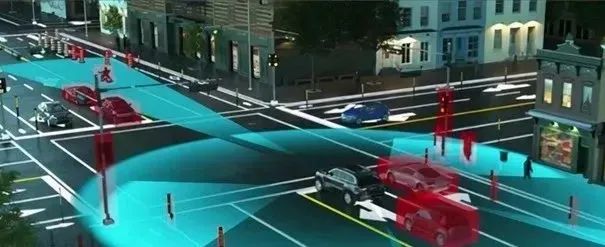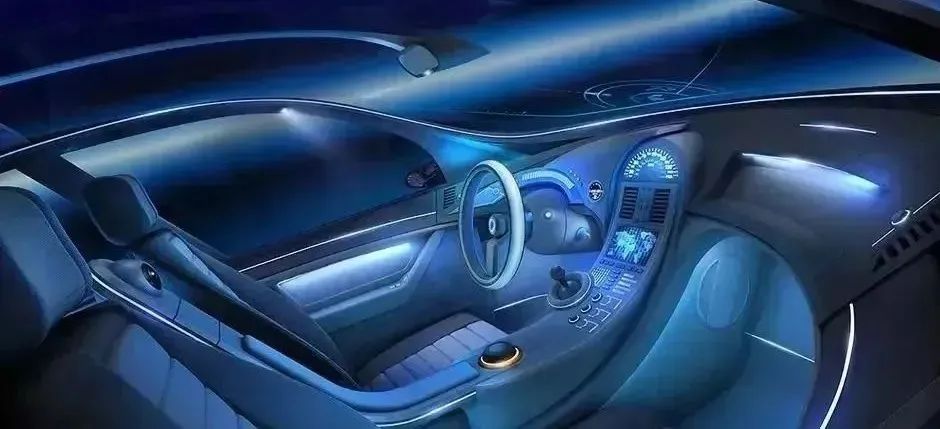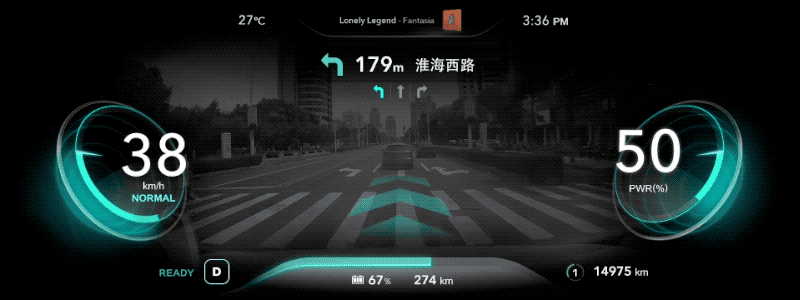Source: Sensor Expert Network
In recent years, with the accelerated development of intelligence, electrification, and connectivity, automobiles are transforming from a single mode of transportation into a multifunctional third space that integrates leisure, entertainment, and office functions. The application of smart sensors can enhance the intelligence and automation level of vehicles. In addition to mainstream sensors such as cameras, millimeter-wave radars, and laser radars, the application of smart sensors in automotive electronics is becoming increasingly widespread.

Sensors play a crucial role in automotive electronic systems. Common automotive sensors include temperature sensors, air flow sensors, and oxygen sensors, which can comprehensively collect various parameters of the automotive electronic system. The emergence of smart sensors has improved the design level of automotive electronic systems, achieving the integration of automotive electronic control units.
When applying smart sensors, it is necessary to optimize the self-regulating and adaptive performance of the sensors to meet the demands of automotive electronic control. Compared to traditional sensors, smart sensors contain microprocessors, enabling them to collect and process information. Additionally, smart sensors have advantages such as diverse functionalities and low costs. They also exhibit high accuracy and reliability, leading to widespread applications in aerospace, defense, technology, and many other fields.
Application Value of Smart Sensors in Automobiles
1.1 Real-Time Monitoring of Vehicle Conditions
Applying smart sensors in automotive electronic systems allows for real-time monitoring of vehicle conditions. Therefore, automotive manufacturers should enhance their focus on smart sensors and optimize their workflow.
First, parameter settings. To ensure the safety of both driving and parking, technicians need to improve the functions of the automotive electronic system, ensuring that the electronic system can accurately determine the surrounding obstacles and the distance between the obstacles and the vehicle. Therefore, when applying smart sensors, it is necessary to scientifically set the parameters of the sensors, such as the distance parameters between obstacles and the rear of the vehicle, and the distances between obstacles and the sides of the vehicle.
Second, distance detection and comparative analysis. During parking, the smart sensors in the automotive electronic system can automatically detect the safe distance of the vehicle and perform comparative analysis on the distance. If there is a discrepancy between the actual distance and the preset parameters, the smart sensor will automatically alarm; if the actual distance meets the preset parameters, the smart sensor will not alarm.
Third, information feedback. Smart sensors can comprehensively detect the vehicle’s speed and driving environment, analyze the vehicle’s safety coefficient, and provide driving information to the driver, enhancing the safety coefficient of driving and preventing issues like speeding. Therefore, applying smart sensors in automotive electronic systems can provide drivers with a wealth of accurate information, allowing them to drive safely based on the prompt information.
1.2 Enhancing Vehicle Performance
Applying smart sensors can also optimize vehicle performance and improve the overall level of the vehicle. During operation, smart sensors can comprehensively collect vehicle information, analyze faults in the vehicle, and assist staff in fault repairs, which is beneficial for enhancing vehicle performance.
Key Technologies in Smart Sensors
2.1 Nonlinear Self-Calibration Technology
Nonlinear self-calibration technology belongs to precision adjustment technology, which can enhance the measurement accuracy of smart sensors and reduce nonlinear issues within them. Previously, the circuit design within sensors primarily applied nonlinear calibrators, with minimal optimization effects. However, smart sensors have implemented nonlinear self-calibration software. When applying smart sensors, this software can accurately process various parameters and voltage constants of the smart sensors and perform data fitting through corresponding algorithms. However, nonlinear self-calibration technology is still not fully developed and requires increased research efforts. In recent years, neural network technology has rapidly advanced, allowing technicians to utilize it to optimize nonlinear self-calibration technology, further enhancing the measurement accuracy of smart sensors.
2.2 Multi-Information Fusion Technology
The automotive electronic system involves many physical quantities, so multi-information fusion technology is needed when applying smart sensors. Technicians can use smart sensors along with related devices to monitor the automotive electronic system and acquire operational data. However, the application scenarios of single sensors are quite limited, so technicians need to enhance the comprehensive design of smart sensors, utilizing multi-information fusion technology to strengthen their comprehensiveness.
During the design process, technicians can use multi-information fusion technology to combine different smart sensors, enabling effective data transmission of different types, thereby achieving real-time monitoring of the vehicle’s operational status. At the same time, technicians need to scientifically categorize the types of data information and utilize different smart sensors for classification and integration.
2.3 Networking Technology
Applying networking technology in smart sensors can optimize their design by utilizing a unified data processing unit. Therefore, during the design process, technicians should focus on signal acquisition, scientifically construct data processing units, and use network interfaces for data processing. Technicians should also flexibly apply embedded technology and TCP/IP protocols to enhance data transmission efficiency. Additionally, technicians can utilize bus transmission technology to improve data analysis efficiency, ensuring that smart sensors better meet the demands of automotive electronic systems.
Specific Applications of Smart Sensors
In recent years, the application range of smart sensors in automotive electronic systems has become increasingly broad. From practical situations, smart sensor systems mainly include three stages: measurement exploration, analysis, and information release. In the measurement exploration stage, smart sensors can analyze and assess the vehicle’s external environment and the distribution of obstacles, detecting the distance between obstacles and the vehicle, playing a crucial role in safe vehicle operation. In the analysis stage, smart sensors can classify, store, and process the collected information, sending corresponding commands based on the results. In the information release stage, smart sensors can process according to the command content.
3.1 Application of Smart Sensors in Automatic Lighting Systems
The electronic automatic lighting system in a vehicle can enhance the internal brightness and improve driving safety.
Applying smart sensors in the electronic lighting system can automatically detect external light conditions and control the lighting system’s switch accordingly. That is, when external light is poor, the smart sensor will automatically turn on the lighting system without the need for driver operation. Therefore, applying smart sensors in the vehicle’s electronic automatic lighting system can not only optimize the driving environment but also reduce energy consumption and shorten the driver’s operation time. For instance, a certain automotive brand has applied capacitive proximity sensors in its lighting system, allowing the interior lighting system to automatically turn on or off simply by the driver’s hand approaching the sensor.
3.2 Application of Smart Sensors in Airbag Trigger Systems
In practice, safety accidents may occur during vehicle operation, so automotive manufacturers install airbags to protect the safety of the driver. Applying smart sensors in the airbag trigger system can effectively integrate the electronic control unit, optimizing the vehicle’s collision detection performance, ensuring that airbags can deploy promptly during accidents.
Therefore, applying smart sensors in the airbag trigger system can enhance the system’s automatic detection and maintenance functions, improving the timeliness of airbag deployment and reducing the likelihood of airbags failing to operate normally. For example, automotive manufacturers can use micro-inertial sensors or micro-accelerometers in the airbag trigger system to comprehensively monitor the system and enhance the capabilities of the airbag ECU.
3.3 Application of Smart Sensors in Automatic Wiper Systems
The driving environment for vehicles is complex, and heavy rain can increase driving difficulty. Therefore, automotive manufacturers equip vehicles with wipers to reduce the impact of rain on visibility. However, during practical applications, the wiper’s movement may also affect the driver’s visibility, and adjusting the wiper’s frequency can distract the driver’s attention, potentially leading to safety accidents.
Applying smart sensors in the vehicle’s wiper system can enhance the intelligence level of the wiper system, allowing the wipers to automatically adjust their frequency based on the amount of rain. In the wiper system, it is necessary to set up light-emitting diodes; when rain obscures the light-sensitive diodes, the wipers will automatically adjust their frequency. Additionally, infrared electronic rain sensors can be applied in the wiper system to adjust the frequency based on rain volume and vehicle speed, enhancing driving safety.
3.4 Application of Smart Sensors in Tire Pressure Monitoring Systems
During high-speed driving, all drivers are very concerned about tire failures, and preventing tire failures can be challenging. Once a tire failure occurs, it can lead to severe consequences. Therefore, ensuring tire safety is crucial for vehicle safety. However, many drivers lack awareness of monitoring and do not regularly check tire pressure, relying only on visual assessments, which makes it difficult to identify safety hazards and fault factors within the tires.
Setting up tire pressure monitoring systems in automotive electronic systems can automatically monitor tire pressure. Applying smart sensors in tire pressure monitoring systems can optimize monitoring functions, promptly identifying tire failures such as blowouts. Technicians need to install highly sensitive smart sensors on the vehicle’s tires to automatically monitor tire pressure and provide feedback via radio signals, allowing drivers to constantly monitor tire pressure. If there are issues with tire pressure, the smart sensor will also automatically alarm, helping to prevent tire failures.
3.5 Application of Smart Sensors in Anti-lock Braking Systems
The anti-lock braking system is a critical system in vehicles, capable of analyzing tire slip conditions during braking and automatically adjusting the braking force to prevent wheel lock-up. Applying smart sensors in the anti-lock braking system can effectively control tire slip rates, shorten braking distances, and enhance the operability of the anti-lock braking system. For example, automotive manufacturers can apply angular velocity sensors in the anti-lock braking system to control wheel angular velocity, thereby controlling brake fluid pressure and enhancing driving safety.
3.6 Application of Smart Sensors in Automotive Pressure Systems
Applying smart sensors in automotive pressure systems can comprehensively detect the pressure within the vehicle’s pipelines and process pressure data. Automotive manufacturers can use hydraulic sensors in automotive pressure systems to fully understand the functions of electrical equipment and optimize power infrastructure, keeping automotive pressure within reasonable limits.
3.7 Application of Smart Sensors in Vehicle Chassis Control Systems
Applying smart sensors in vehicle chassis control systems can achieve automatic regulation of the vehicle’s internal power system and develop control plans based on vehicle operational conditions, optimizing the performance of automotive equipment. Moreover, information technology can be utilized to analyze the data collected by smart sensors, assessing vehicle stability and ensuring the stable operation of internal control systems.
3.8 Application of Smart Sensors in Automotive Navigation Systems
With the continuous development of GPS technology, automotive navigation systems have become increasingly sophisticated. Applying smart sensors in automotive navigation systems can enhance the performance of navigation systems and improve multimedia device functionality, providing drivers with better navigation services.
3.9 Application of Smart Sensors in Automotive Engine Control Systems
The engine is a key component of the vehicle, and its operational status affects the vehicle’s normal driving. Applying smart sensors in automotive engine control systems can monitor the engine’s operational status in real time, enhancing the stability and safety of the engine control system, thereby ensuring vehicle safety.
3.10 Application of Smart Sensors in Remote Sensing Distance Measurement Systems
As automotive manufacturing technology continues to improve, the role of remote sensing transmission systems in automotive electronics has become increasingly evident. Installing remote sensing transmission systems in vehicles can provide drivers with spatial information about the vehicle, as well as distance and reversing information.
Specifically, applying remote sensing transmission systems can automatically detect the actual distance between vehicles, determining the safe driving range, allowing drivers to comprehensively grasp vehicle information. Implementing smart sensors in remote sensing distance measurement systems can automatically detect the distance between vehicles and surrounding obstacles, providing audible alerts to drivers and enhancing the informatization level of vehicle operation.
Future Development Trends
4.1 Automotive Internal Circuit Design Gradually Moving Towards Integration
Automotive internal spaces are relatively small, but they involve many circuits. Therefore, when designing automotive circuits, technicians need to utilize smart sensors to optimize design plans and improve design quality. For example, technicians can integrate circuit systems using integrated circuit design schemes and corresponding smart sensors, enhancing the functionality of different circuit systems and increasing the intelligent control level of circuit systems.
4.2 Automotive Components Gradually Moving Towards Stabilization
There are many components in vehicles, and if the stability of these components does not meet requirements, it may increase safety risks during driving. Therefore, when applying smart sensors, technicians should comprehensively analyze the needs of automotive electronics and promote the stabilization of components. For instance, technicians can optimize and modify the relevant components of smart sensors to enhance their performance.
4.3 Automotive Operating Systems Gradually Moving Towards Stabilization
The operating system holds significant importance in vehicles, and technicians need to utilize smart sensors to optimize operating system design, enhancing its stability.
The development cycle of automotive smart sensors is long, and their added value is high, making them the core hardware for achieving intelligent driving. In 2022, the sales of new energy vehicles in China reached 6.887 million, a year-on-year increase of 93.4%, accounting for 61.2% of global sales. New energy vehicle sales accounted for 25.6% of total new vehicle sales, achieving the 2025 planning goal three years ahead of schedule. The goal-driven nature of autonomous driving and the booming trend in automotive market sales create favorable conditions for the automotive sensor market. Therefore, Chinese technology enterprises and automotive manufacturers should enhance their focus on smart sensors, ensuring that the current advantageous situation of new energy vehicles is not hindered by sensor limitations!



